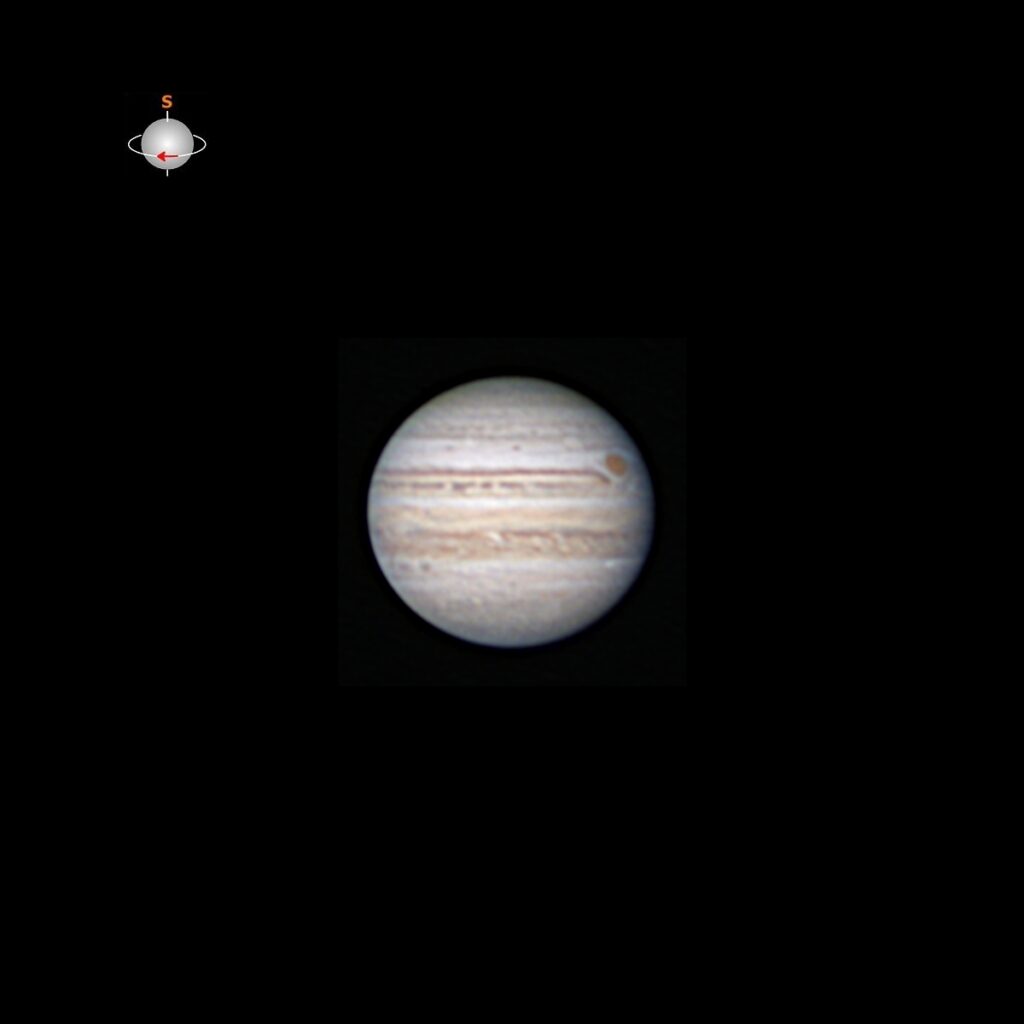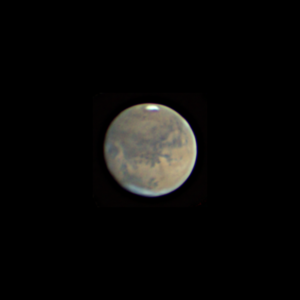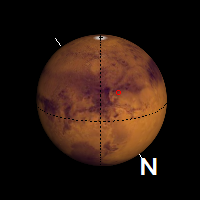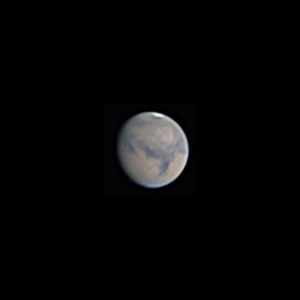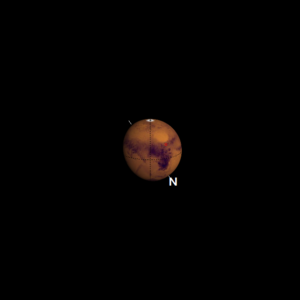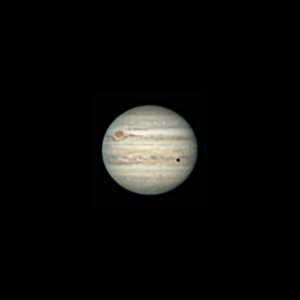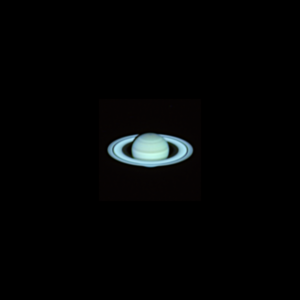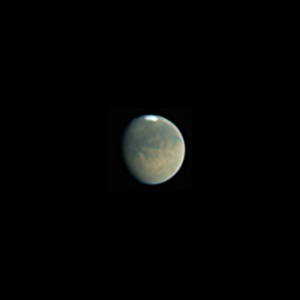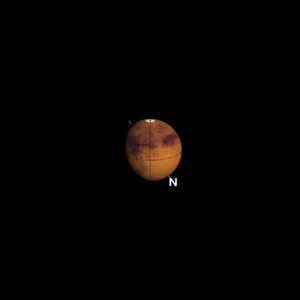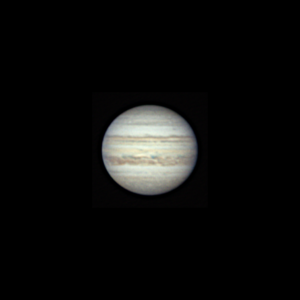I spent last night repeatedly opening and closing the dome to counter the clouds. The clouds would open just long enough to convince me to open the dome, find a target, focus and start imaging. They would then slowly move back in prompting dome closure just to be safe.
Eventually though, I was able to piece together a series of Jupiter. Saturn was never visible through the gaps long enough to even start a set.
First up was Jupiter. It was already well past my meridian and closing on the western tree line before the planet made appearances through several gaps in the clouds. The GRS was just coming into view as well as the white spot indicating the newly discovered storm in the north temperate belt. It is expected that the material dredged up by the storm will react with solar energy and darken the belt as it spreads out to encircle the planet.
Mars was a little easier. The clouds broke open long enough to get one full series and the start of another before they finally brought the session to an close. The clouds forming the north polar hood are more apparent than in the image I took on the 2nd of Sept.
